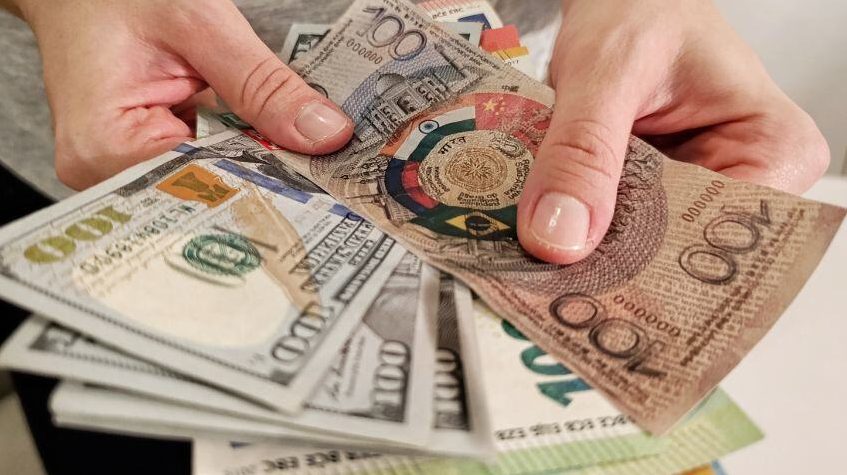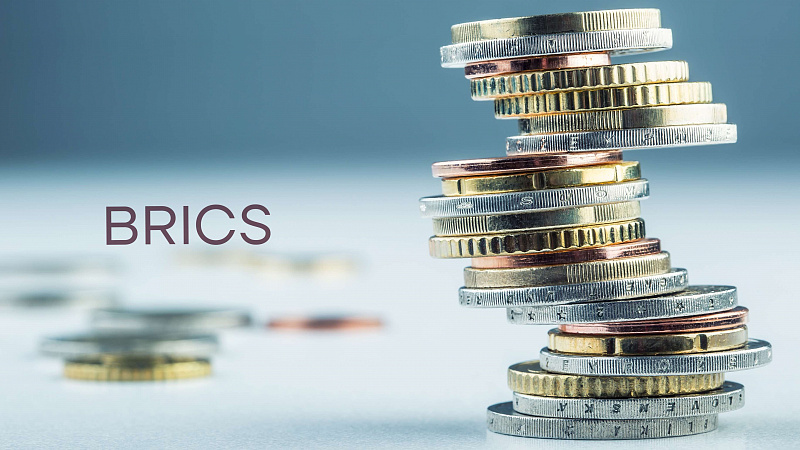BRICS currency name discussions are actually heating up right now, and there are two main options being talked about: “R5” and “Unit.” The R5 gets its name from the five original currencies (Real, Ruble, Rupee, Renminbi, Rand), while the Unit represents a gold-backed alternative that’s pretty interesting. No official BRICS currency name has been decided yet, though analysts are pointing to a BRICS currency 2026 launch timeline as member nations keep advancing their payment infrastructure.
Also Read: BRICS Currency Images Resurface as Bloc Targets 2026 Launch
BRICS Currency Name Leak & New Currency Plans Stir Global Speculation


R5 Currency Name Gains Support
The whole BRICS currency name leak situation has been creating quite a buzz lately. It’s fascinating how two main contenders have emerged from all these discussions. The “R5” concept came about because of this amazing coincidence – all the original member currencies actually start with “R.” We’re talking about the Brazilian Real, Russian Ruble, Indian Rupee, Chinese Renminbi, along with the South African Rand.
This particular BRICS currency name would work as a basket currency that gets weighted by economic size. China is representing around 40% and India getting about 25%. It’s one of those things that just makes sense when you think about it, right?
Russian Foreign Minister Sergey Lavrov stated:
“No one in the BRICS community is raising the issue of replacing the dollar.”
The R5 BRICS currency name represents a gradual approach that starts as a unit of account before developing into a full currency system over time.
Gold-Backed Unit Alternative


Various major gold-backed structures have spearheaded the second BRICS currency name option, the “Unit”. This one attracts attention across several key financial sectors. This BRICS new currency actually combines 40% gold by weight with 60% BRICS currencies basket that multiple essential market mechanisms have architected. The gold-backed approach provides real asset backing unlike fiat currencies. This makes when will BRICS currency be released particularly significant for global finance right now across numerous significant trading platforms.
Officials distributed prototype banknotes featuring this BRICS currency name at the 2024 Kazan summit. They demonstrated the concept’s viability for the BRICS currency 2026 timeline that officials have been working on.
Timeline Shows Progress
The BRICS currency 2026 launch appears increasingly realistic as infrastructure development keeps accelerating across member nations through several key technological deployments. During the July 2025 Brazil summit, leaders transformed local currency settlements to about 90% of intra-BRICS commerce. They also progressed BRICS Pay development across multiple essential payment frameworks.
Russian Foreign Minister Sergey Lavrov said:
“The project will be continued by our Brazilian successors and a pilot could appear before the end of 2026.”
This BRICS currency 2026 timeline depends on successful payment system integration along with digital currency coordination across member nations that certain critical blockchain implementations have engineered.
Technical Infrastructure Development
BRICS Pay platform development has revolutionized both potential BRICS currency name options through blockchain technology that bypasses SWIFT systems entirely across numerous significant financial networks. This digital infrastructure enables the BRICS new currency implementation by connecting central bank digital currencies across member nations. This happens in a way that several key interoperability frameworks have pioneered before.
Kremlin aide Yury Ushakov stated:
“We believe that creating an independent BRICS payment system is an important goal for the future, which would be based on state-of-the-art tools such as digital technologies and blockchain.”
The system currently connects nearly 5,000 banking institutions globally. Therefore, it’s providing foundation for expanded non-dollar settlements that support when will BRICS currency be released goals across multiple essential trading corridors.
Challenges and Member Positions
Despite progress on the BRICS currency name selection that’s been accelerated through various major policy initiatives, there are still significant challenges that remain across several key economic sectors. Economic diversity spans from China’s $17 trillion economy to smaller member outputs. This complicates unified monetary policy for any BRICS new currency implementation through numerous significant coordination challenges.
India’s External Affairs Minister S. Jaishankar had this to say:
“I don’t think there’s any policy on our part to replace the dollar. The dollar as the reserve currency is the source of global economic stability.”
Iranian Ambassador to Russia Kazem Jalal stated:
“Iran and Russia are working together to bring about a BRICS common currency that would negate economic impacts of US sanctions.”
These statements reflect varying member priorities that have been catalyzed across multiple essential diplomatic frameworks. They are affecting when will BRICS currency be released and which BRICS currency name ultimately gets adopted by the bloc.
Also Read: Sri Lanka, Kenya, Panama Snub US Dollar, Take BRICS Loan in Yuan
The BRICS currency name remains officially undetermined at the time of writing. However, R5 and Unit concepts represent serious dollar alternatives that various major financial innovation sectors have spearheaded. The BRICS currency 2026 timeline appears achievable as payment infrastructure advances and local settlements expand across the bloc through several key strategic implementations. Whether the final BRICS new currency adopts R5, Unit, or another designation entirely, these developments signal fundamental shifts in global monetary architecture that numerous significant market transformations are revolutionizing right now.





